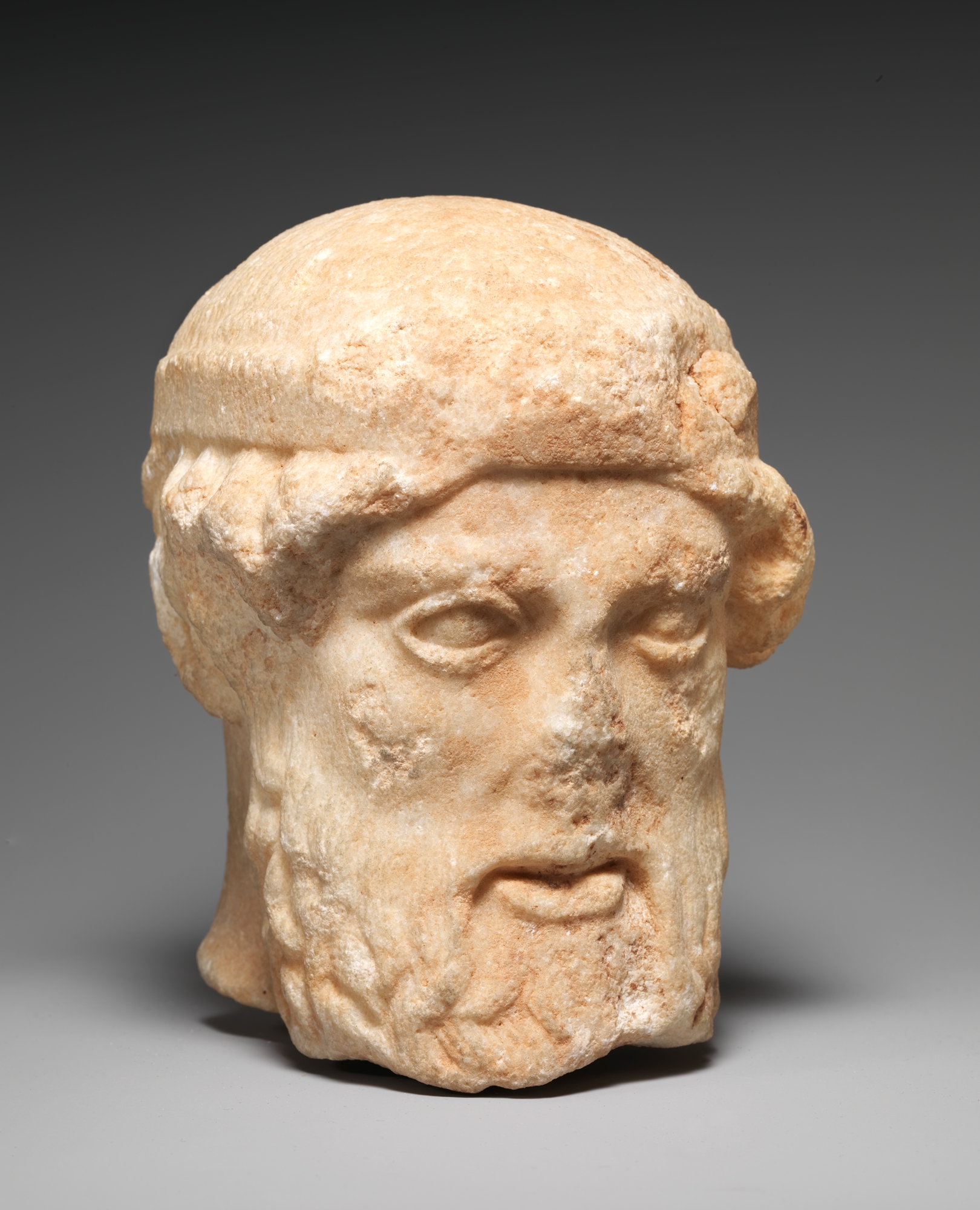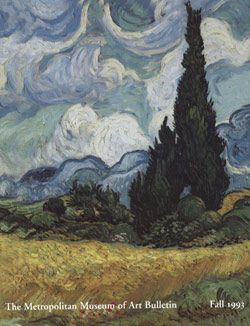Marble herm head of a bearded deity
The angular transition between the sides and the back of the neck indicates that the head comes from a herm rather than a statue. Herms, the rectangular pillars surmounted by a head of Hermes, are first attested during the last quarter of the sixth century B.C. They were used primarily as boundary markers and guardians of entrances and thoroughfares. In the fifth century B.C., other deities such as Zeus were also represented in herm form and the monuments were used for a wider variety of functions. It is not possible to identify the god represented here. The elaborate hairstyle consisting of two long braids coiled around the head and held in place by a flat band is often found on images of Zeus or Poseidon. The heavily lidded eyes and the dignified composure of the face point to the end of the early Classical period.
This image cannot be enlarged, viewed at full screen, or downloaded.
This artwork is meant to be viewed from right to left. Scroll left to view more.






